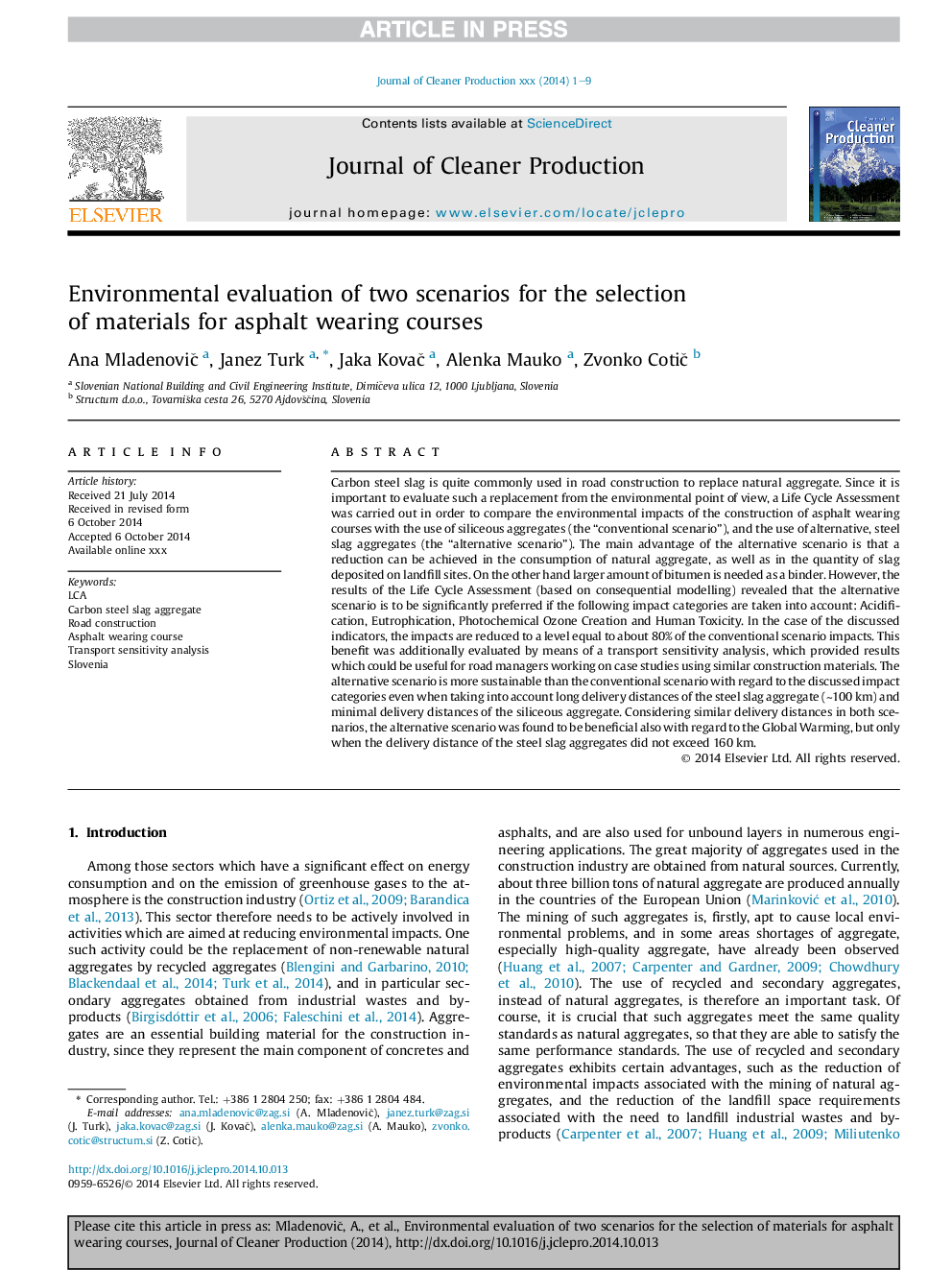| Article ID | Journal | Published Year | Pages | File Type |
|---|---|---|---|---|
| 8105369 | Journal of Cleaner Production | 2015 | 9 Pages |
Abstract
Carbon steel slag is quite commonly used in road construction to replace natural aggregate. Since it is important to evaluate such a replacement from the environmental point of view, a Life Cycle Assessment was carried out in order to compare the environmental impacts of the construction of asphalt wearing courses with the use of siliceous aggregates (the “conventional scenario”), and the use of alternative, steel slag aggregates (the “alternative scenario”). The main advantage of the alternative scenario is that a reduction can be achieved in the consumption of natural aggregate, as well as in the quantity of slag deposited on landfill sites. On the other hand larger amount of bitumen is needed as a binder. However, the results of the Life Cycle Assessment (based on consequential modelling) revealed that the alternative scenario is to be significantly preferred if the following impact categories are taken into account: Acidification, Eutrophication, Photochemical Ozone Creation and Human Toxicity. In the case of the discussed indicators, the impacts are reduced to a level equal to about 80% of the conventional scenario impacts. This benefit was additionally evaluated by means of a transport sensitivity analysis, which provided results which could be useful for road managers working on case studies using similar construction materials. The alternative scenario is more sustainable than the conventional scenario with regard to the discussed impact categories even when taking into account long delivery distances of the steel slag aggregate (â¼100Â km) and minimal delivery distances of the siliceous aggregate. Considering similar delivery distances in both scenarios, the alternative scenario was found to be beneficial also with regard to the Global Warming, but only when the delivery distance of the steel slag aggregates did not exceed 160Â km.
Keywords
Related Topics
Physical Sciences and Engineering
Energy
Renewable Energy, Sustainability and the Environment
Authors
Ana MladenoviÄ, Janez Turk, Jaka KovaÄ, Alenka Mauko, Zvonko CotiÄ,
